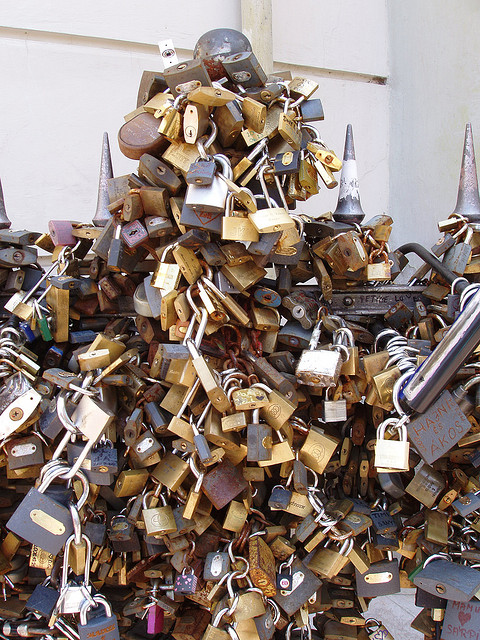 “Renegade Ornament and the Image of the Post-Socialist City: The Pécs ‘Love Locks’, Hungary.” The Present of the Recent Past: Reinterpretations of Socialist Modernism in East Central Europe, Tímea Kovacs, ed. Cologne: Böhlau Verlag, 2010.
“Renegade Ornament and the Image of the Post-Socialist City: The Pécs ‘Love Locks’, Hungary.” The Present of the Recent Past: Reinterpretations of Socialist Modernism in East Central Europe, Tímea Kovacs, ed. Cologne: Böhlau Verlag, 2010.
Within the image of the post-Socialist city today, multiple tensions are at work. Official representations of such cities, intended for cosmopolitan, leisured audiences and international investors, are often at odds with local histories of contestation and resistance. As more urban centres mobilize their architectural capital for the purpose of shaping supposedly apolitical, tourist-friendly futures, as buildings and neighbourhoods are destroyed or reinterpreted to correspond to preferred urban visions, the spatial histories of control and dissent become more crucial to map. This essay is an attempt to trace and give dimension to an unusual phenomenon in the city of Pécs, Hungary, and to consider its significance in relation to the city’s changing urban image. Named a World Heritage Site in 2000, Pécs is today seeking to strengthen its ties to the European Union. In the midst of preparations for this much-desired recognition, tucked into a route between historic monuments, is a spectacular and curious sight. Thousands of metal padlocks have transformed an ordinary iron gate in the heart of this East-Central European city. Clamped to the gate’s bars and to each other, the locks make a perplexing sculptural intervention in, and interruption of, an otherwise visually coherent, neo-Baroque street. Often inscribed with initials and dedications, the locks are rumored to represent young paramours’ hopes for the longevity of their passions. A favorite photo opportunity for tourists, the locks have come to function nicely within the city’s drive to represent itself as a ‘city of lively public spaces’, one whose international, largely anglophone persona is increasingly linked to tourism, romantic getaways, and love. In this essay, I depart from the idea that the locks’ appearance and meaning in the historic core of Pécs have simply to do with love, arguing instead that the locks are a crucial trace of a nexus of oppositional stances in the city, rehearsing, by their very presence and multiple axes of significance, the public-ness of the spaces of Pécs’ historic core.